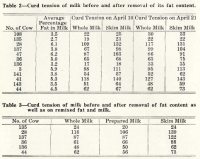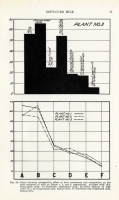Hello, everybody. This is my first post. Please forgive me for grammar mistakes, because I work with a translator.
My question: Why is so little attention paid to the enzyme chymosin here? I read through a patent today and it's very impressive what it says. I've summarized a few things:
I know this is not a solution to our digestive problems, but perhaps a temporary solution to better deal with milk? Is there any experience on this topic?
Sunny greetings from Germany.
Eugene.
My question: Why is so little attention paid to the enzyme chymosin here? I read through a patent today and it's very impressive what it says. I've summarized a few things:
- symptoms of colic in an infant could be completely or nearly completely alleviated by administering a small amount of active chymosin.
- causes cleavage of the peptide bond between the phenylalanine and methionine. The resultant product of cleavage is calcium phosphocaseinate, which does not cause bloating or gas production in the stomach, and thus, no symptoms associated with colic.
- infant feels full rather than hungry.
- creates a feeling of comfortable fullness for a prolonged period of time
- treating or preventing a variety of diseases and disorders such as, for example, infant colic, heartburn, gastro-esophageal reflux, gastro-esophageal reflux disease, irritable bowel syndrome, and recurrent abdominal pain.
- improvement of calcium absorption from milk and milk products.
- significantly better capability to regulate ph value over prolonged periods of time, including the ability to regulate gastrointestinal motility. These capabilities have a surprisingly positive effect on the quality of life of patients with chronic digestion problems related to disorders such as ulcerous colitis, multiple sclerosis and diabetes.
- towards use in weight loss diets and for diabetic patients.
- provide a very slow increase in blood sugar.
- directed towards treating lactose and milk protein intolerance.
- will transform the casein protein into paracasein, thus ensuring that the digestive system does not have to process heavy casein proteins.
- provides for a slow and favorable proteolytic phase.
- improves protease in general, as well as the digestion of milk lactose.
- has affects to the acid milieu, enzymatic secretions, and bacterial homeostasis in the stomach and, secondarily, in the lower gastrointestinal tract.
- calcium becomes more available to the body, together with various vitamins contained in milk.
- can be used for treating osteoporosis.
- optimize the digestive process and balance the pH milieu in the stomach.
- have a positive influence on gastric emptying, reducing the risk of reflux to the esophagus as well as reducing the damage to the lining of the esophagus by buffering the gastric acid.
- balanced gastric milieu and transit time, absorption in the small and large intestines is greatly improved.
- have ameliorative effects on regurgitation and reflux problems, including but not limited to gastritis and heartburn, as well as on digestion problems including irritable bowel syndrome.
- have a positive effect on blood sugar, which allows for the treatment of types I and II diabetes patients.
- may provide a treatment for migraine patients.
- efficiently converts liquid milk to a semisolid like cottage cheese, allowing it to be retained for longer periods of time in the stomach.
I know this is not a solution to our digestive problems, but perhaps a temporary solution to better deal with milk? Is there any experience on this topic?
Sunny greetings from Germany.
Eugene.




